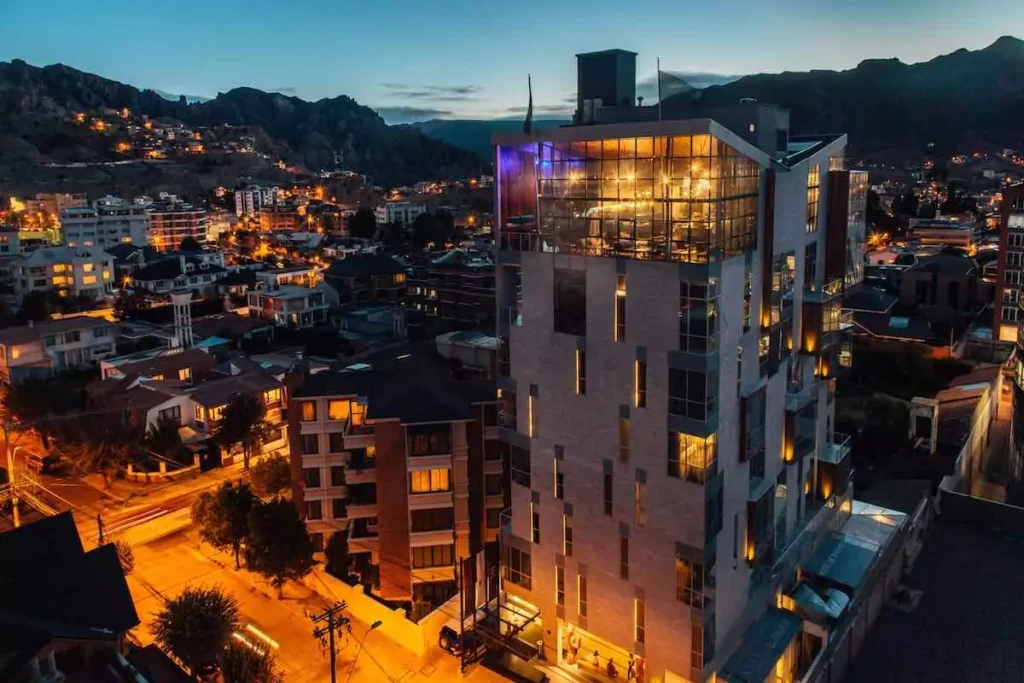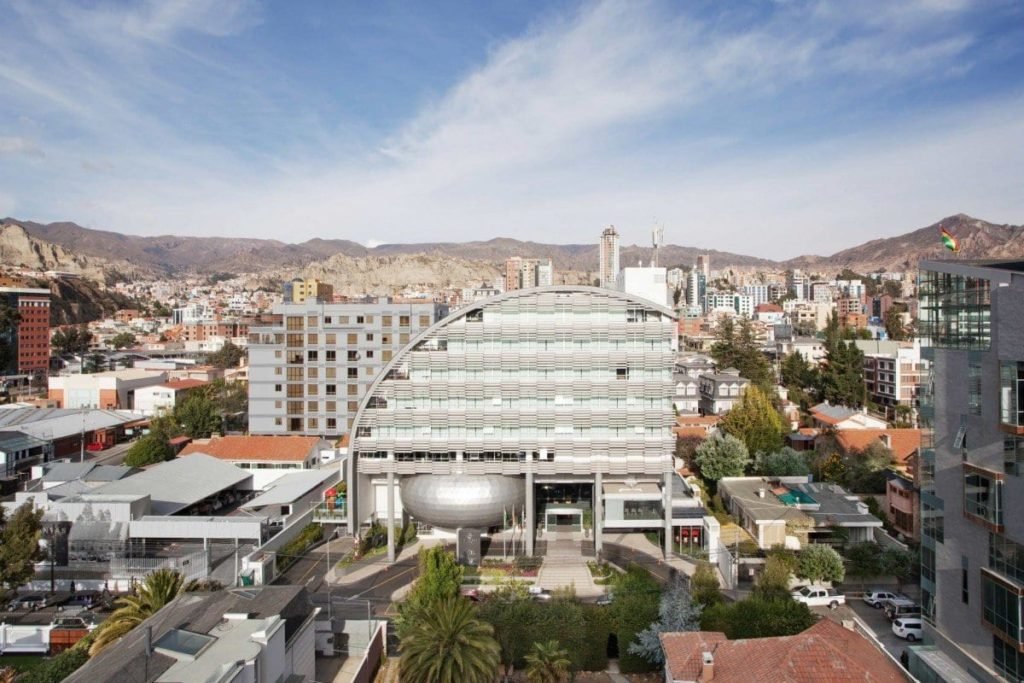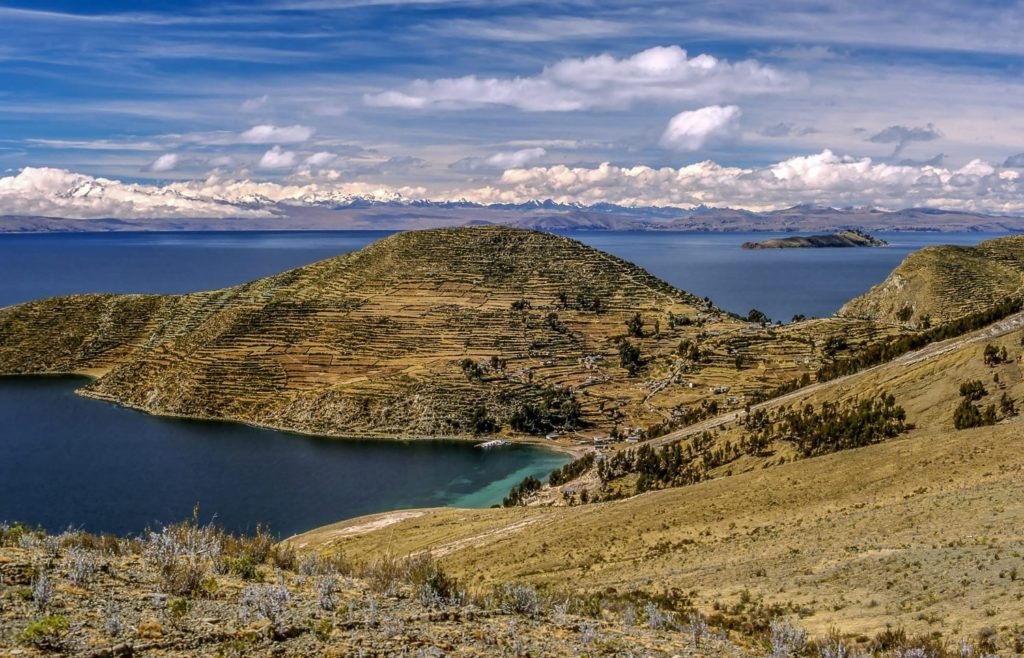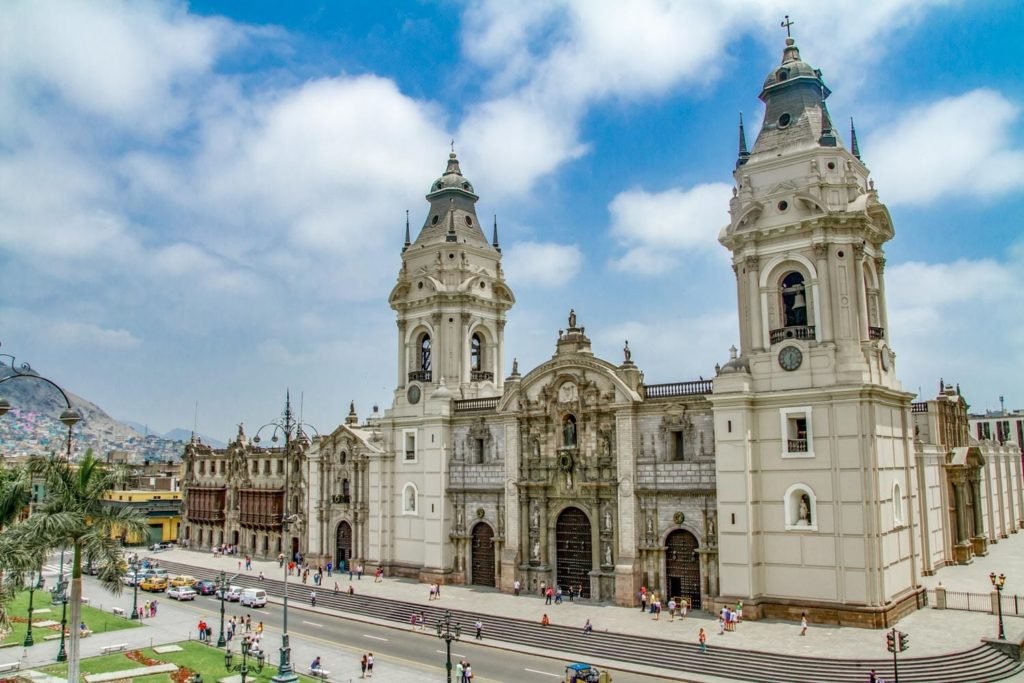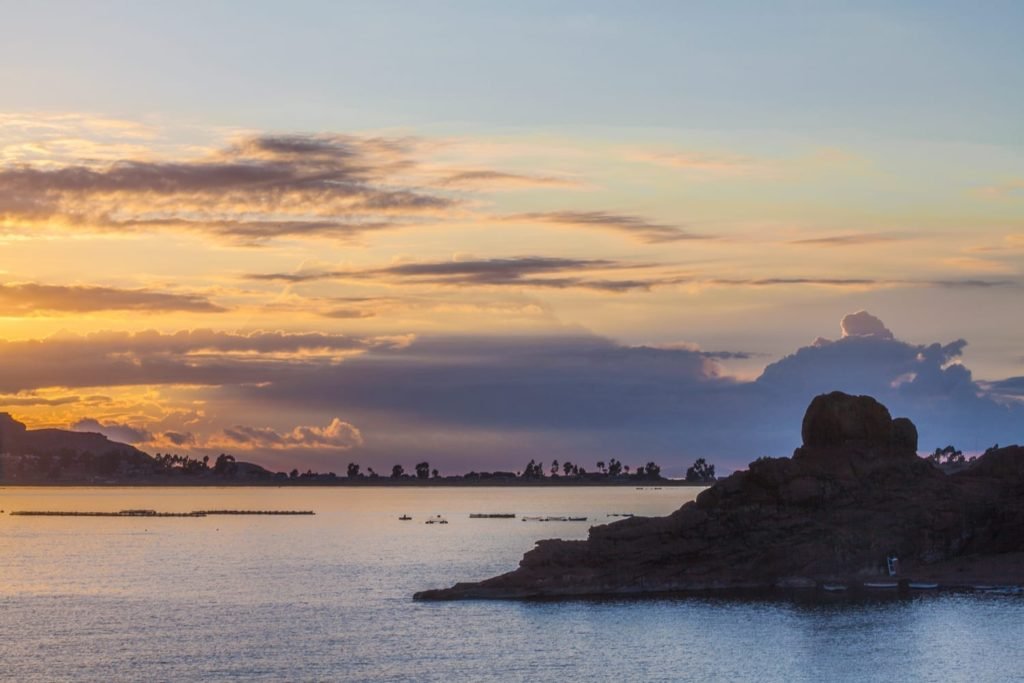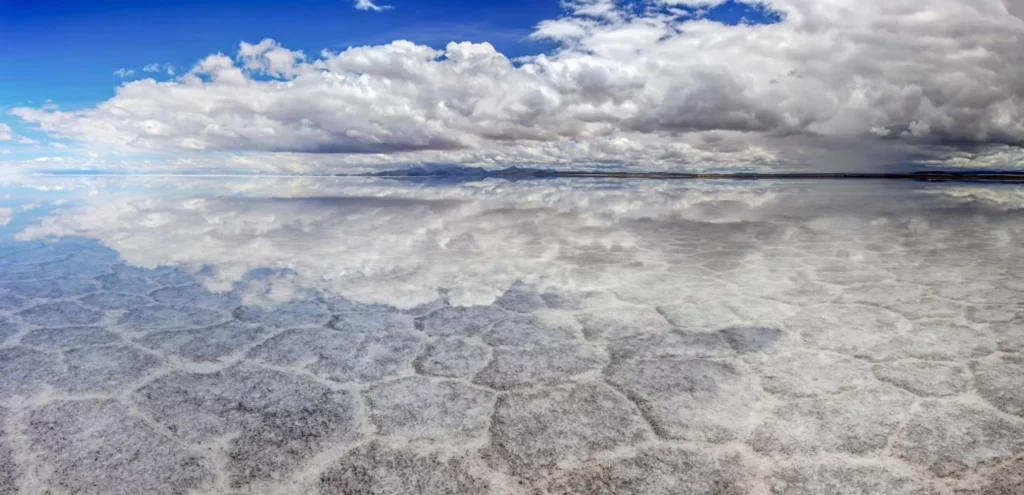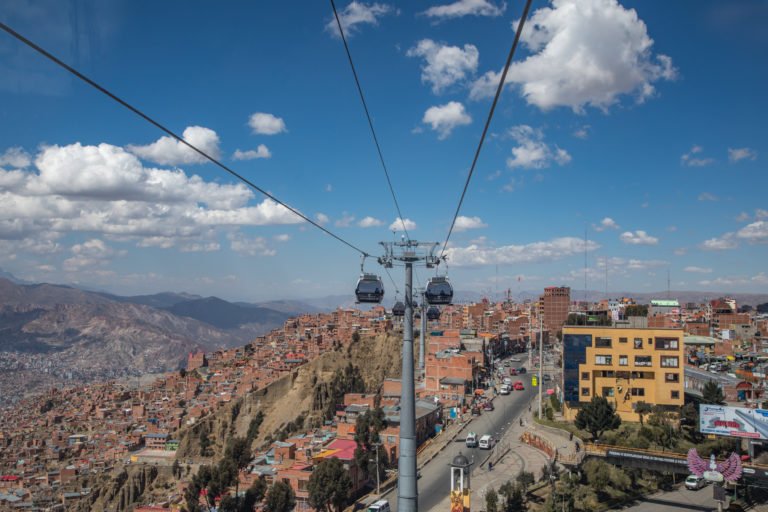Nuestra Señora de La Paz
The city of Nuestra Señora de La Paz is nestled in the Andes of western Bolivia.
This is high altitude living—the city famously climbs the Rio Choqueyapu Canyon from 9,800 to 13,450 feet above sea level. Its historic core and financial district are located in the lower elevations.
Income declines as slope increases—outward and upward from the level city center. Overlooking it all, Illimani, the guardian mountain of the city, shines under a triple-peaked crown of ice.
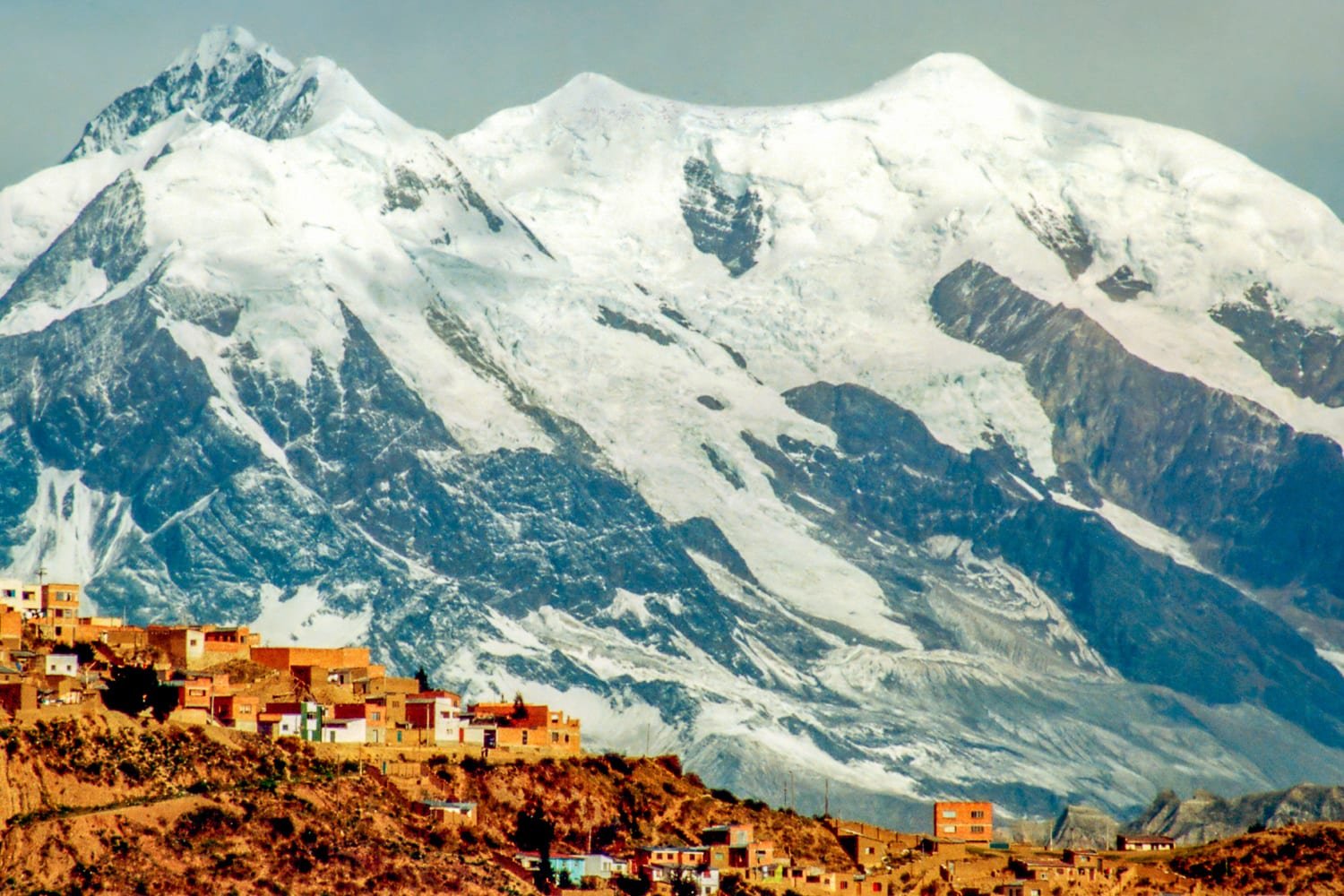
Colonial Roots
La Paz was founded in its current form in 1548, on the site of an Aymara gold mining settlement. Its unusual canyon location insulates the city from the harsh Altiplano winds.
In colonial times, La Paz served as a convenient intermediate point on the journey between Spanish ports in Lima and the world’s largest silver mine at Potosi.
Today, La Paz is Bolivia’s largest urban area and its de facto capital. (The constitutional capital and judiciary are located in Sucre, 350 miles to the southeast).
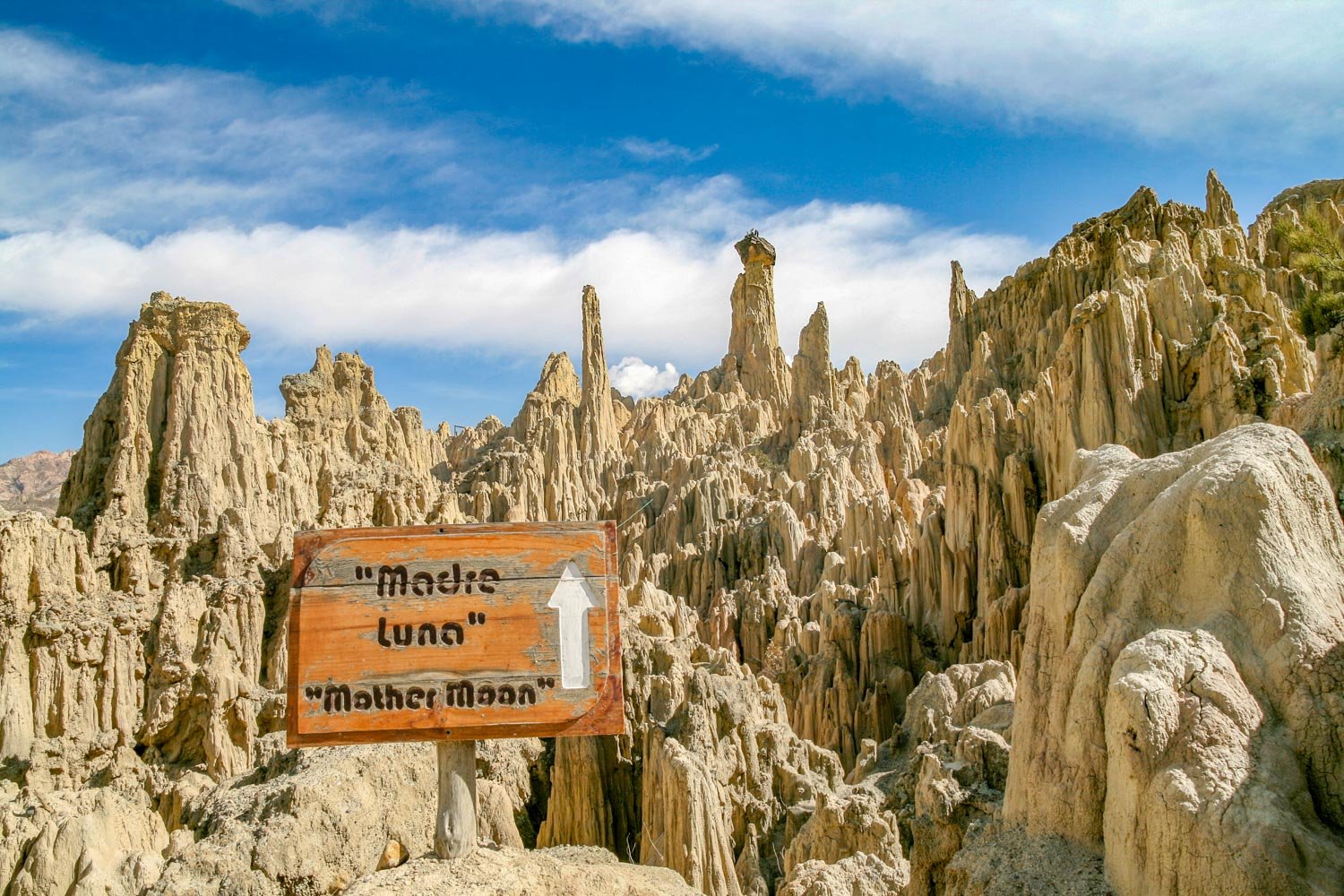
The city center is the site of the Presidential Palace, cathedral, and clusters of small museums. Our favorites include the Museum of Precious Metals and the National Museum of Archeology.
The famous Witch’s Market or Hecheria, where folk doctors dispense talismans and traditional remedies, lines Calle Jiménez in a series of jangling, palo santo-scented shops and kiosks.
Valley of the Moon and Valley of Spirits
Outside the city, the Valley of the Moon and Valley of Spirits add to the peculiarity of this landscape. Farther afield, visitors can day trip to the pre-Inca city of Tiwanaku and historic sites on Lake Titicaca.
Visitors to La Paz should allow time to acclimatize—settle in, avoid alcohol, eat moderately, and sleep well.
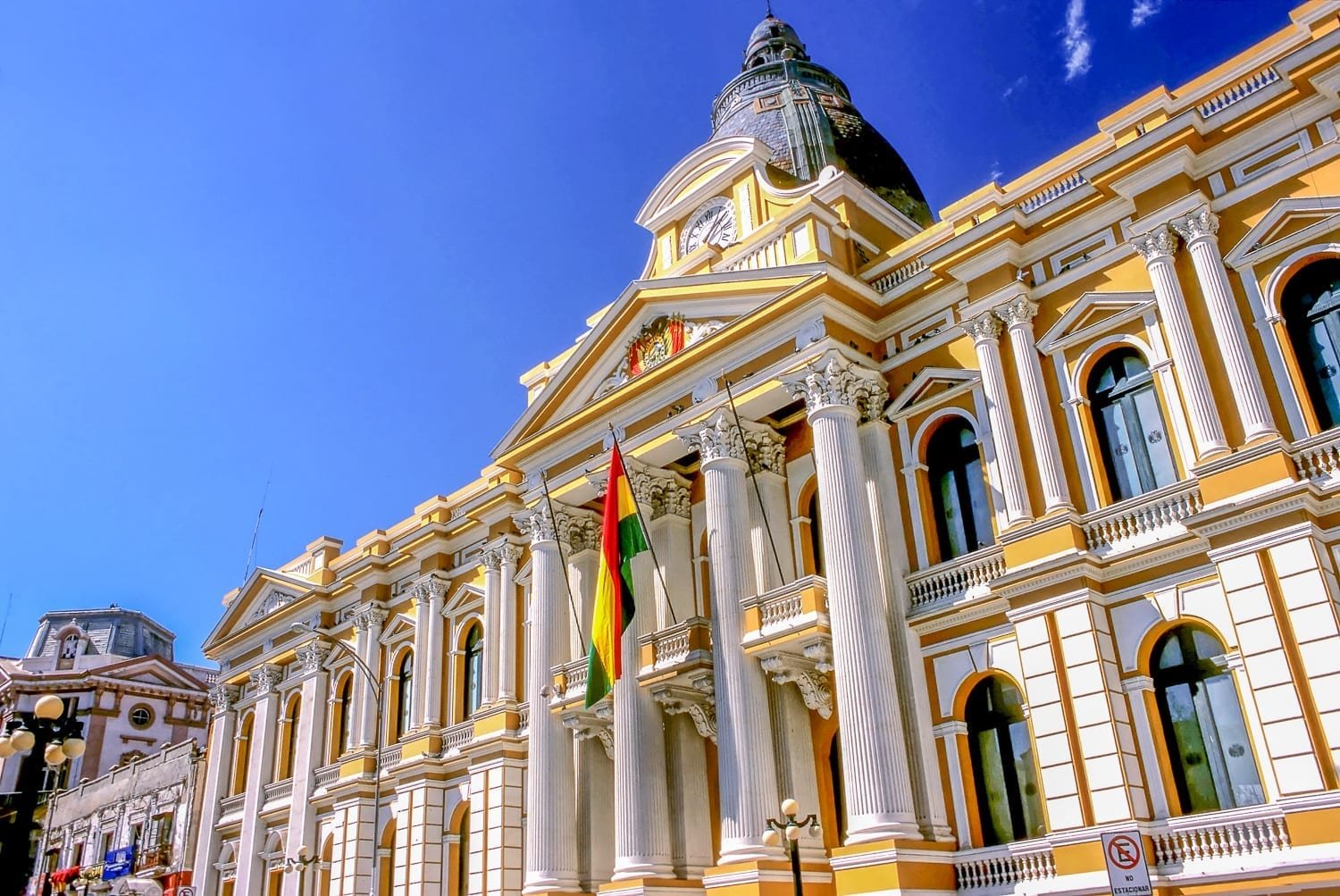
What to do in La Paz
- Aerial Cable Car Rides
- Visits to Valle de la Luna
- Hiking
- Mountain Biking
- Ruins Tours
- Art & Design
- Galleries
- Traditional Markets
- Local Coffee Tastings
- Cholits Wrestling Shows
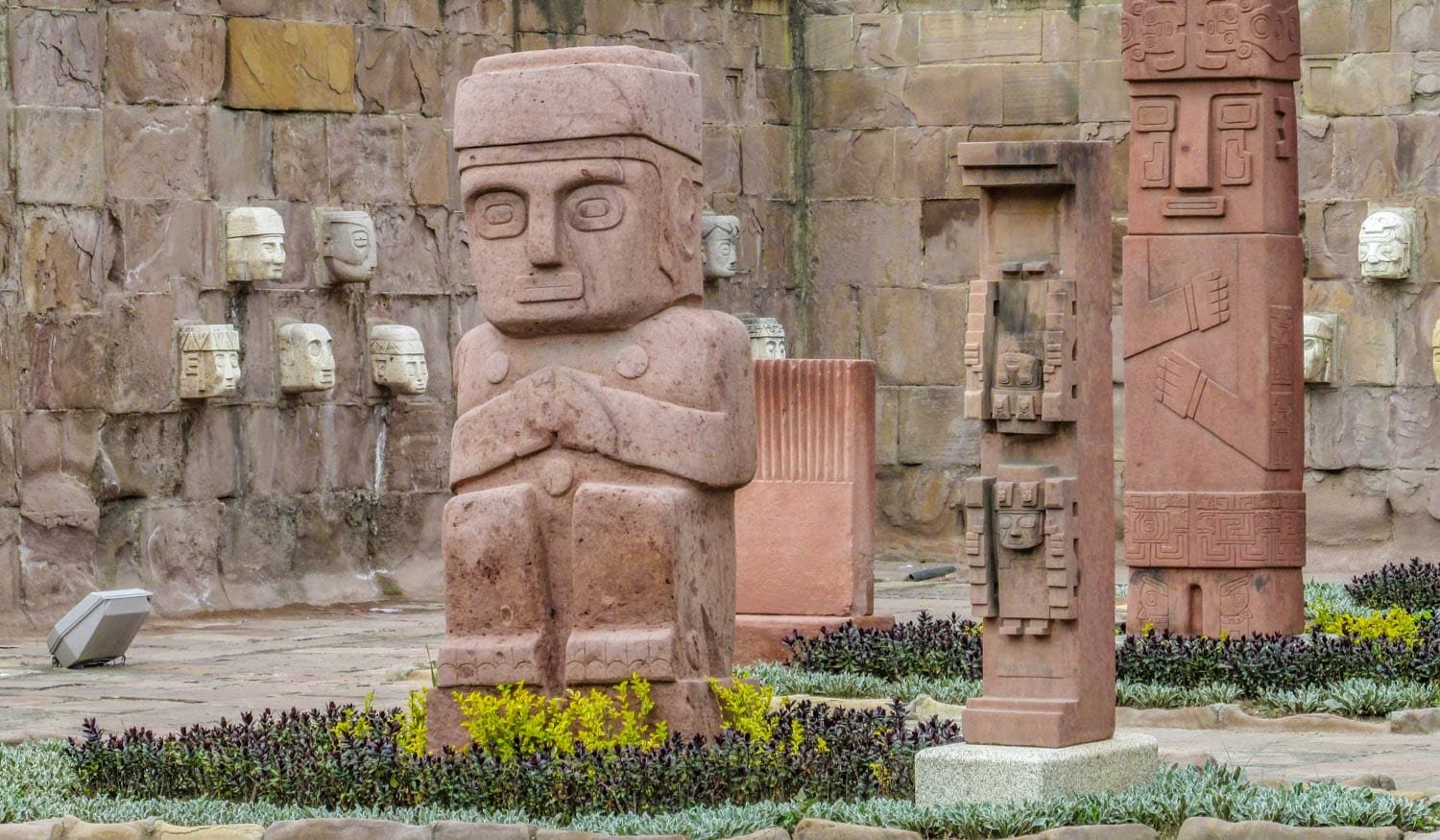
What is the Weather Like?
At nearly 12,000 feet above sea level, La Paz experiences crisp, high-altitude weather. Average daytime highs hover near 60°F, while nighttime lows often dip to 35°F. The dry season, May to October, offers clear skies and brighter days—ideal for mountain views and city explorations. From November to March, afternoon rains bring greener valleys but can complicate overland travel. With strong sun during the day and chilly evenings year-round, layering is the key to comfort in La Paz.
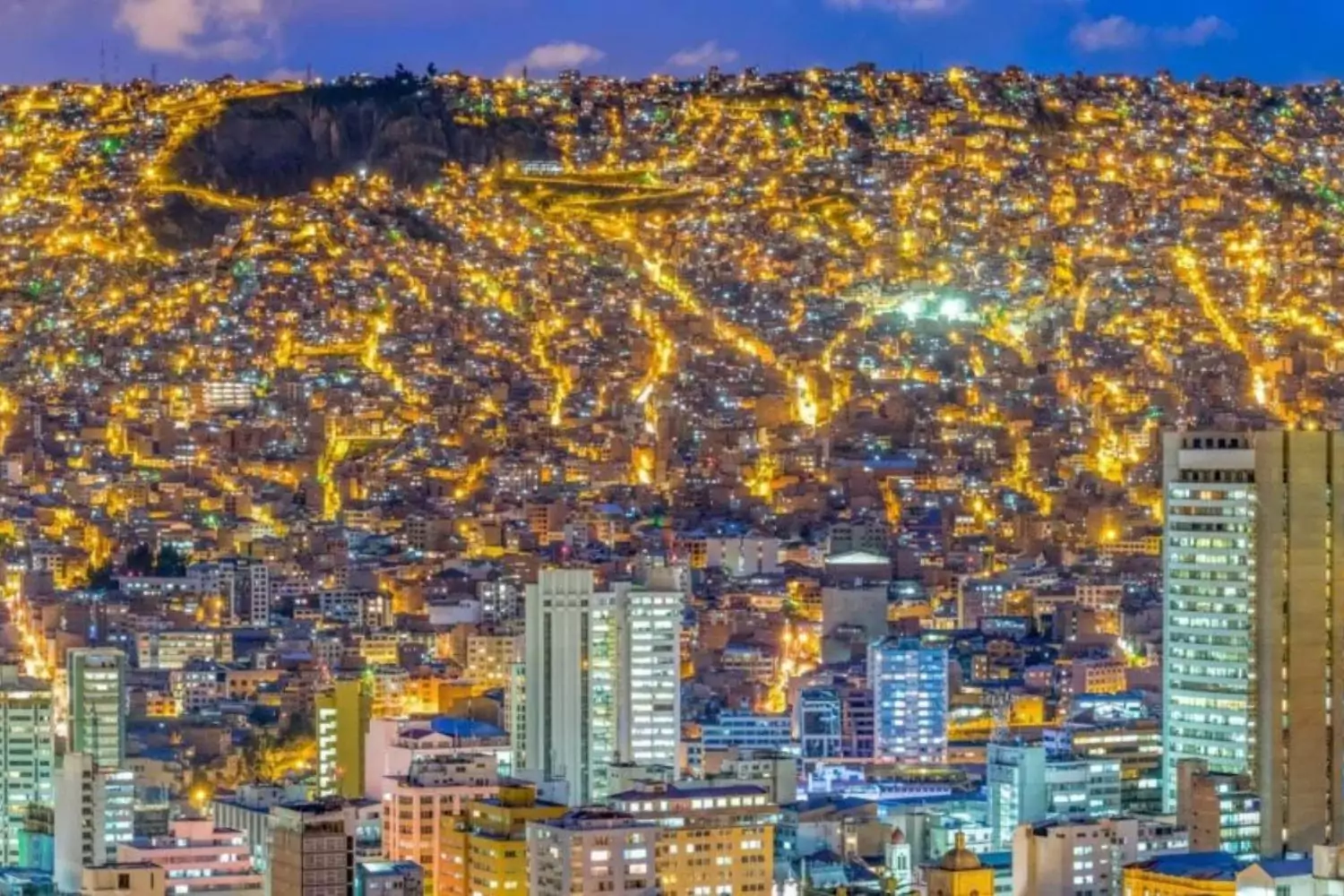
Getting There
La Paz can be reached by daily flights from Lima, Peru (1 hour, 45 minutes). Flights to La Paz’s El Alto International Airport (LPB) from the USA usually connect in Lima, simplifying combination Peru – Bolivia vacations.
Start your journey today
LANDED delivers the finest in custom, private travel to Central America, South America, and Antarctica. These regions are our passion; we know them first-hand and by heart. Speak with one of our travel designers and let us create a tailored itinerary for you in La Paz.
How to combine La Paz
Have some extra time? Here are some options for you to combine with.

